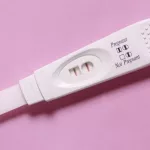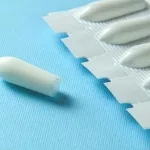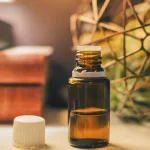Hey there, friend. If you’ve just learned you have IgA nephropathy (IgAN) or you’ve been living with it for a while, the flood of medical terms and treatment options can feel overwhelming. The good news? You don’t have to overhaul your entire life overnight. Below are five practical, everyday changes that can protect your kidneys, keep your blood pressure in check, and make you feel a little lighter day‑to‑day. Grab a cup of tea, settle in, and let’s walk through them together—step by step, no jargon, just honest advice.
Nutrition Blueprint
Why Sodium and Protein Matter
Think of your kidneys as tiny water filters. When you load up on salt, the filter gets clogged, water stays in your body, and blood pressure spikes. In IgA nephropathy, that extra pressure can worsen the inflammation already happening inside the glomeruli. The IgA Nephropathy Foundation explains that keeping sodium under 2,300 mg per day (about one teaspoon of salt) helps control both swelling and blood‑pressure surges.
Protein is a bit trickier. Your kidneys need some protein to maintain muscle and immune health, but too much can increase the amount of protein that leaks into the urine (proteinuria), a sign the kidneys are struggling. MyKidneyHouse guidelines recommend a moderate intake—roughly 0.8 g per kilogram of body weight daily—rather than a drastic low‑protein diet that could leave you feeling weak.
Core Components of an IgAN‑Friendly Diet
- Plant‑forward meals: Fill half your plate with colorful vegetables, fruits, whole grains, and legumes. These foods are naturally low in sodium and packed with antioxidants that calm inflammation.
- Lean protein sources: Choose fish (especially those rich in omega‑3s like salmon or sardines), skinless poultry, and plant‑based proteins such as beans or tofu. They give you the amino acids you need without overloading the kidneys.
- Anti‑inflammatory allies: Berries, leafy greens, nuts, and olive oil have been shown to reduce systemic inflammation. The anti‑inflammatory diet guide from the IgAN Foundation recommends at least one serving of these foods every day.
- Smart seasoning: Ditch the shaker and reach for fresh herbs, lemon zest, garlic, and pepper to add flavor without the salt.
Quick Sodium Checklist (<2,300 mg/day)
| What to Look For | Action |
|---|---|
| Nutrition label shows ≥20 % DV sodium per serving | Avoid or limit; choose a low‑sodium alternative |
| Processed meats, canned soups, frozen meals | Swap for fresh grilled chicken, homemade soups |
| Salty snacks (chips, pretzels, salted nuts) | Replace with unsalted nuts or fresh fruit |
| Restaurant dishes with “soy sauce” or “brine” | Ask for sauce on the side or use a low‑sodium version |
When to Try a Gluten‑Free Trial
Some people with IgAN notice that a gluten‑free diet calms down proteinuria and even eases stomach discomfort. The IgAN Foundation’s gluten‑free diet article cites a handful of small studies where patients reported lower protein levels in their urine after eliminating gluten for several months.
Before you toss every slice of bread in the trash, here’s a gentle rule of thumb: try a short, supervised trial (four to six weeks) with the guidance of a registered dietitian. Keep an eye on potassium—some “salt‑free” seasonings are actually potassium‑rich, which can be risky for kidney patients.
Red Flag: Potassium‑Heavy Salt Substitutes
Those “salt‑free” packets that promise to save your heart might actually push potassium levels higher than safe. WebMD warns that many salt substitutes are loaded with potassium chloride, and if you’re on certain blood‑pressure meds, that extra potassium can become dangerous. Always run it past your nephrologist before swapping out regular salt.
Kidney‑Safe Exercise
Best Types of Activity
Exercise is like a gentle massage for your blood vessels—it helps keep pressure low and improves overall circulation. For most people with IgAN, low‑impact cardio (walking, stationary bike, swimming) combined with a couple of strength‑training sessions a week does the trick. A 2024 review in Nephrology Practice found that regular moderate exercise reduced proteinuria by up to 15 % in chronic kidney disease patients.
Starter 10‑Minute Daily Routine
- Warm‑up (2 min): March in place, roll shoulders, gentle neck circles.
- Brisk walk or bike (5 min): Aim for a pace that makes you breathe a little deeper but still able to talk.
- Body‑weight circuit (2 min): 10 squats, 10 wall push‑ups, 10 seated leg lifts.
- Cool‑down (1 min): Stretch calves, hamstrings, and take three deep breaths.
Start with just a few minutes each day and let the habit grow. If you feel dizzy, fatigued, or notice swelling after a workout, pause and check in with your care team.
Safety Tips When You’re Feeling Low
- Keep a small notebook to track weight and swelling before and after exercise.
- Stay hydrated, but avoid large gulps of water right before you start; sip slowly.
- Exercise in a cool environment—humidity can raise blood pressure.
Weight & Blood Pressure
Why a Healthy Weight Matters
Extra pounds act like extra pressure on your kidneys, forcing them to work harder. The IgAN Foundation notes that modest weight loss (5‑10 % of body weight) can lower intraglomerular pressure and slow disease progression.
SMART Goal‑Setting for 5 % Weight Loss
| Specific | Lose 8 lb (for a 160‑lb person) |
|---|---|
| Measurable | Track food intake with a free app, weigh weekly |
| Achievable | Cut 250 kcal/day, add 15 min walk |
| Relevant | Reduces kidney strain and improves energy |
| Time‑bound | Reach goal in 12 weeks |
Home Blood‑Pressure Monitoring
Invest in a validated upper‑arm cuff. Measure in the morning and evening, sitting down with a relaxed arm. Write the numbers down and bring the log to your next appointment. Seeing trends (downward arrow) gives you and your doctor real‑time feedback on how your lifestyle tweaks are working.
Stress & Sleep
Stress’s Hidden Impact on Kidneys
Stress releases cortisol, a hormone that can raise blood pressure and increase inflammation. A 2023 study in Kidney International linked chronic stress to higher levels of proteinuria in CKD patients. The takeaway? Managing stress isn’t a “nice‑to‑have” add‑on; it’s a core part of kidney care.
Three Easy Mind‑Body Practices
- Five‑minute breathing pause: Inhale for 4 seconds, hold 2, exhale 6. Repeat five times.
- Micro‑yoga stretch: Gentle cat‑cow pose while watching TV.
- Gratitude jot: Before bed, write three things that went well today.
Sleep Hygiene for Kidney Repair
During deep sleep, your body releases growth hormone, which helps with tissue repair—including kidney cells. Aim for 7‑9 hours, keep caffeine after 2 pm, dim lights an hour before bedtime, and maintain a cool bedroom (around 65 °F). If you’re waking up frequently, talk to your doctor—sometimes fluid buildup or blood‑pressure meds can interfere with rest.
Avoid Harmful Substances
Smoking, Alcohol, and Over‑the‑Counter meds
Smoking speeds up kidney damage by narrowing blood vessels. If you smoke, consider a quit‑line or nicotine‑replacement therapy; many patients find success with a combination of counseling and medication.
Alcohol should be limited to no more than one drink per day for women and two for men. Too much can raise blood pressure and add extra calories.
Non‑steroidal anti‑inflammatory drugs (NSAIDs) like ibuprofen or naproxen may feel soothing for aches but they can constrict the blood flow to the kidneys. Use them only under a doctor’s direction, and opt for acetaminophen for occasional pain.
Medication Checklist (PDF download optional)
- ACE inhibitor or ARB (first‑line for blood pressure & proteinuria)
- Budesonide delayed‑release (TARPEYO) – for high‑risk IgAN
- Sparsentan (FILSPARI) – newest agent targeting protein leakage
- Supplements only if prescribed (e.g., vitamin D, iron)
Staying Informed About New Treatments
The treatment landscape for IgAN is evolving fast. Clinical trials are exploring targeted therapies that attack the disease at its root. The IgA Nephropathy Foundation’s clinical trials page lists active studies you might be eligible for. Asking your nephrologist about trial options can give you access to cutting‑edge care while helping future patients.
Jump‑Start Plan
Three‑Month Action Calendar
| Week | Focus | Action |
|---|---|---|
| 1‑2 | Food Labels | Read sodium info on every packaged item; aim for ≤ 20 % DV per serving. |
| 3‑4 | Move Daily | Start the 10‑minute routine; add a 15‑minute walk on three days. |
| 5‑6 | Check‑In | Log blood pressure twice daily; review numbers with your doctor. |
| 7‑8 | Stress Tools | Practice the breathing pause each morning; keep a gratitude journal. |
| 9‑10 | Gluten Test (optional) | Try a gluten‑free week with dietitian guidance; record urine protein if possible. |
| 11‑12 | Review & Adjust | Compare weight, BP, and energy levels; celebrate wins, tweak what’s needed. |
Progress‑Tracking Worksheet (downloadable)
Print a simple table with columns for Date, Sodium (mg), BP (mm Hg), Steps, Mood, and Notes. Fill it in each day—seeing patterns on paper can be surprisingly motivating.
Conclusion
Living with IgA nephropathy doesn’t have to feel like you’re constantly fighting an invisible enemy. By embracing five core lifestyle changes—smart nutrition, kidney‑safe movement, weight and blood‑pressure stewardship, stress‑reduction plus sleep, and avoiding harmful substances—you give your kidneys the best chance to stay strong while you enjoy life’s simple pleasures.
Remember, every small step adds up. Start with one habit, stick with it for a couple of weeks, then add another. If you’ve tried any of these tips already, what’s worked for you? Share your experience in the comments or reach out to your care team for personalized guidance. We’re all in this together, and together we can make kidney health a little less intimidating and a lot more hopeful.


















Leave a Reply
You must be logged in to post a comment.